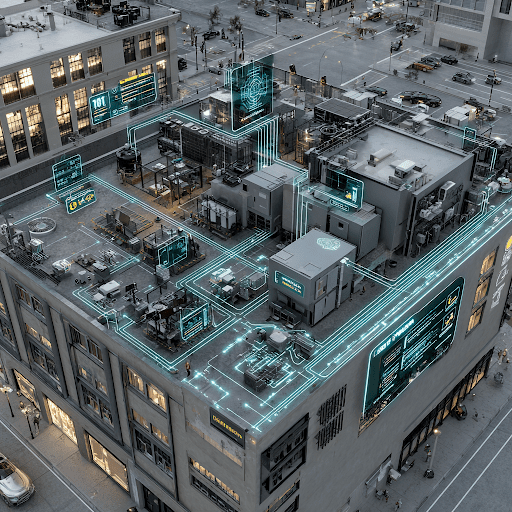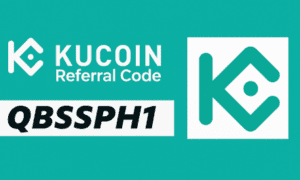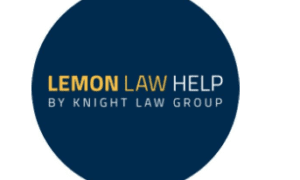The intersection of distributed ledger technology and building infrastructure is creating unprecedented opportunities for cost optimization and operational transparency. Today’s predictive flat roof maintenance systems leverage IoT sensors that feed data directly into blockchain networks, while automated flat roof maintenance contracts execute payments and schedule interventions without human oversight. This convergence of physical asset management with financial technology transforms how commercial property owners approach one of their most critical infrastructure investments.
Think of traditional building maintenance like keeping cash under your mattress while blockchain-enabled systems function like having a sophisticated automated investment portfolio. The difference isn’t merely technological sophistication but fundamental approach to asset management and risk mitigation. Modern systems demonstrate how thermal bridge mastery revolutionizes commercial roofing by integrating sensor networks with predictive analytics, while blockchain decentralizes IoT networks to create trustless verification systems that eliminate intermediary costs and fraud vulnerabilities.
The Tokenization of Physical Assets
Commercial real estate has long struggled with maintenance financing transparency. Property managers accumulate reserve funds for roof replacement, but these capital pools often lack clear accountability and verifiable performance metrics. Blockchain technology fundamentally alters this dynamic by enabling tokenization of maintenance reserves, creating fractional ownership opportunities that attract institutional capital while maintaining complete transparency.
Here’s where it gets interesting for fintech enthusiasts. When a commercial building tokenizes its maintenance reserve fund, investors can purchase fractions representing shares in the facility’s long-term performance. Smart contracts automatically distribute returns based on energy efficiency improvements, avoided emergency repairs, and extended asset lifecycles. This creates liquid markets for previously illiquid maintenance capital, democratizing access to commercial real estate infrastructure investments.
The crypto angle extends beyond theoretical applications. Several proptech startups now accept stablecoin payments for maintenance contracts, eliminating currency conversion fees for international property portfolios while providing instant settlement. When a building in Toronto requires urgent flat roof maintenance, payment in USDC or other stablecoins enables immediate contractor engagement without waiting for international wire transfers that can take days and incur substantial fees.
IoT Sensor Networks and Predictive Analytics
Modern commercial roofing systems increasingly incorporate moisture sensors, temperature monitors, and structural stress detectors that generate continuous data streams. These IoT devices create unprecedented visibility into roof condition, but the real magic happens when this data feeds into blockchain-validated analytics platforms that trigger automated responses.
Consider the typical scenario where moisture penetration begins degrading roof insulation. Traditional approaches rely on periodic inspections that might miss developing problems for months. IoT-enabled systems detect moisture intrusion immediately, with sensors recording data to blockchain ledgers that create immutable records of when conditions began deteriorating. This timestamped evidence protects all parties by eliminating disputes about when problems began and whose responsibility they represent.
The predictive maintenance capabilities become truly revolutionary when machine learning algorithms analyze blockchain-verified sensor data across thousands of buildings simultaneously. These systems identify patterns that precede failures, enabling interventions before damage occurs. The algorithmic predictions recorded on blockchain create verifiable forecasts that inform insurance underwriting, property valuations, and investment decisions.
Smart Contracts Revolutionize Service Agreements
Traditional maintenance contracts involve substantial administrative overhead. Property managers schedule inspections, contractors submit invoices, payments require approval workflows, and disputes about work quality create friction throughout the process. Smart contracts eliminate most of this inefficiency by codifying agreement terms in executable code that runs automatically when predetermined conditions occur.
Here’s a practical implementation example. A commercial building implements smart contracts for flat roof maintenance that automatically trigger payments when IoT sensors verify work completion and quality standards. The contractor receives instant payment in cryptocurrency once blockchain-verified sensor data confirms that membrane repairs meet specified thermal performance metrics. No invoices, no approval workflows, no payment delays.
The insurance implications deserve particular attention. Smart contracts integrated with IoT monitoring can automatically file claims when sensor data indicates damage from covered events. The blockchain record provides indisputable evidence of pre-loss condition, damage timing, and repair verification. Claims settlement that traditionally required months can occur within days, with cryptocurrency payments providing instant liquidity.
Energy Efficiency and Carbon Credits
Commercial buildings represent massive energy consumers, with roof systems playing crucial roles in thermal performance. Blockchain technology enables unprecedented transparency in tracking energy efficiency improvements, creating verifiable carbon credit opportunities that generate additional revenue streams from maintenance investments.
When a commercial property installs energy-efficient roofing systems with blockchain-verified performance monitoring, the measured energy savings can be tokenized as carbon credits tradeable on emerging crypto-powered environmental exchanges. Smart contracts automatically distribute proceeds among investors who funded the improvements, creating direct financial incentives for sustainability investments that traditionally relied solely on long-term operational savings.
This carbon credit tokenization represents a convergence of environmental, social, and governance investing with cryptocurrency markets. Institutional investors seeking ESG exposure can purchase tokens representing specific building efficiency improvements, with blockchain providing transparent verification that the underlying assets generate claimed environmental benefits. The financial engineering possibilities rival traditional securities markets while offering superior transparency and liquidity.
Decentralized Property Management Networks
The broader vision extends beyond individual buildings to create decentralized networks where maintenance resources, expertise, and capital flow efficiently across entire portfolios. Blockchain enables peer-to-peer coordination among property owners, creating cooperative maintenance purchasing that generates economies of scale previously available only to large institutional owners.
Imagine a network where 50 commercial property owners pool maintenance reserves into a blockchain-governed fund that achieves bulk purchasing discounts and prioritizes interventions based on algorithmic risk assessments rather than individual owner schedules. Smart contracts automatically allocate resources to highest-priority needs while maintaining transparent accounting that prevents the conflicts of interest plaguing traditional property management.
The decentralized autonomous organization model increasingly appears viable for commercial property maintenance. Token holders vote on major capital decisions while smart contracts handle routine operations automatically. This governance structure eliminates management fees that typically consume 5-10% of maintenance budgets while providing superior transparency and stakeholder alignment.
Data Monetization Opportunities
The sensor networks generating maintenance data create valuable information assets that blockchain technology enables property owners to monetize. Aggregated, anonymized building performance data has substantial value to material manufacturers, insurance underwriters, and construction firms seeking to improve products and services.
Property owners can license blockchain-verified building performance data through smart contracts that automatically compensate them when researchers, insurers, or manufacturers access information. This creates ongoing revenue streams from data that previously had no market value. The blockchain verification ensures data integrity while maintaining privacy protections through cryptographic techniques.
The research implications are substantial. Academic institutions and material science companies gain access to real-world building performance data at unprecedented scale, accelerating innovation in roofing materials and systems. Property owners receive compensation for contributing data while maintaining competitive confidentiality through aggregation and anonymization.
Investment Vehicle Innovation
The tokenization of commercial building maintenance creates entirely new investment vehicles that blur traditional boundaries between real estate, infrastructure, and financial assets. Cryptocurrency exchanges can list tokens representing fractional ownership in specific building maintenance funds, providing retail investors access to commercial real estate infrastructure returns.
These tokenized maintenance funds offer diversification benefits distinct from traditional REIT investments. Rather than exposure to property values and rental income, investors gain returns from operational efficiency improvements and avoided capital expenses. The risk-return profiles differ fundamentally from conventional real estate investing, creating portfolio diversification opportunities.
Staking mechanisms borrowed from DeFi protocols can incentivize long-term holding of maintenance fund tokens. Investors who stake tokens for specified periods receive enhanced returns from efficiency improvements, creating alignment between capital patience and optimal maintenance strategies that maximize long-term asset value.
Regulatory Considerations and Compliance
The convergence of cryptocurrency, IoT, and physical asset management creates novel regulatory questions that forward-thinking jurisdictions are beginning to address. Securities regulations apply when maintenance tokens represent investment contracts, while insurance regulations govern risk transfer mechanisms embedded in smart contracts.
Blockchain’s transparency actually simplifies regulatory compliance compared to traditional opacity in property maintenance spending. Regulators can audit entire building portfolios instantly by examining blockchain records, identifying patterns of deferred maintenance or inappropriate capital allocation without invasive document requests. This transparency benefits both regulators and compliant property owners by elevating industry standards.
Tax implications of tokenized maintenance reserves and cryptocurrency payment adoption require careful navigation. However, blockchain’s comprehensive transaction records simplify audit trails and reporting requirements. The technology that enables new business models also provides tools for regulatory compliance that exceed capabilities of traditional accounting systems.
Future Convergence with Parametric Insurance
The ultimate integration involves parametric insurance products triggered automatically by blockchain-verified sensor data. Rather than traditional claims processes, insurance payouts occur instantly when IoT sensors detect covered conditions, with smart contracts distributing proceeds without human intervention.
This parametric approach dramatically reduces insurance overhead costs while providing superior customer experience. Property owners receive immediate liquidity when damage occurs, enabling faster repairs that minimize secondary damage. The blockchain verification eliminates fraud concerns that historically required extensive investigation and created payment delays.
The insurance industry’s gradual embrace of blockchain for claims processing and risk assessment suggests this convergence will accelerate. As sensor networks become ubiquitous in commercial buildings, parametric products will shift from novelty to standard offerings, with cryptocurrency settlement providing instant global liquidity.
The transformation of commercial building maintenance through blockchain, IoT, and cryptocurrency represents more than technological upgrade. It fundamentally reconceptualizes how we finance, manage, and optimize physical infrastructure. As these technologies mature and regulatory frameworks evolve, expect accelerating adoption that creates both disruption and opportunity across construction, property management, insurance, and financial services sectors. The buildings housing tomorrow’s commerce are becoming financial assets in their own right, with roofing systems generating data, energy savings, and investment returns that traditional approaches never imagined possible.































